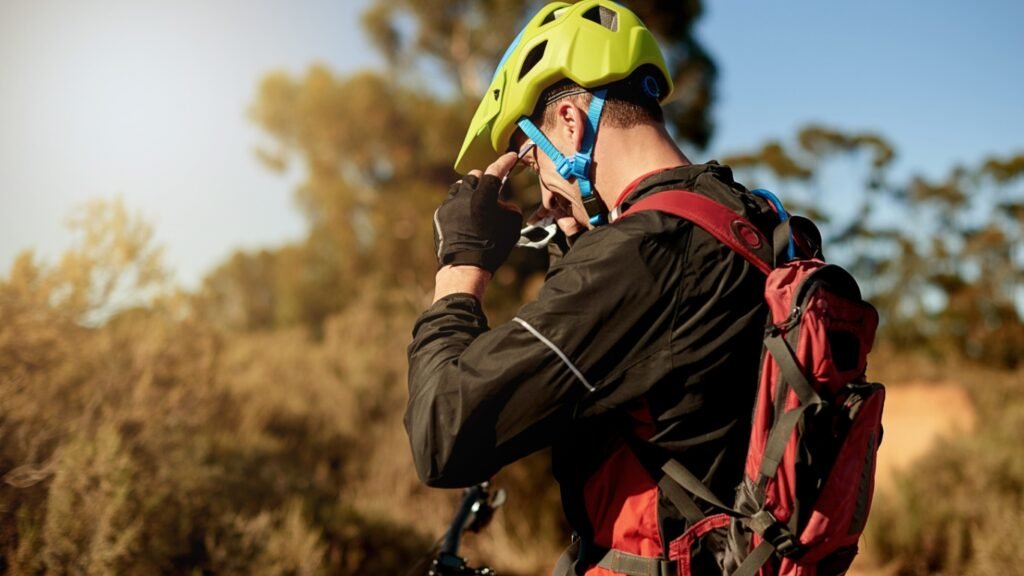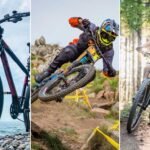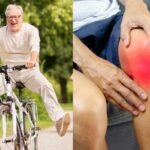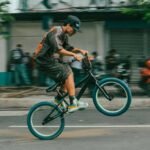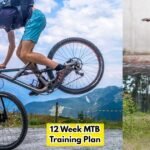Mountain biking is a growing sport. And people love it because it is adventurous and interesting.
However, when it comes to adventure, safety is really important. Therefore, in this article, we will discuss about 13 essential mountain biking gear.
Choosing the right mountain bike safety equipment is important.
They will not just provide you security but will also improve your performance so that you can ride on hard routes, trials, and everywhere without any fear, whether it’s a helmet, a pair of gloves, or pads.
13 Essential Safety Gear for Different Types of Mountain Biking
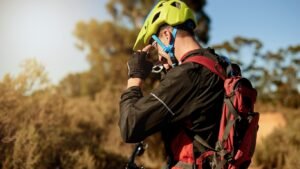
Here are the 13 mtb safety equipment that every rider needs, whether it’s beginner, intermediate, or pro.
-
Helmet – The Absolute Must-Have
It doesn’t matter whether you are a beginner, intermediate, or advanced bike rider. Helmets are important to protect your head.
However, it doesn’t mean that you choose a helmet from a local store. It might be a mistake; therefore, you may want to invest in it.
Especially for mountain biking, you will need helmets that are rated for impacts that can happen during off-roading adventures.
So, here are three main types of helmets for mountain biking.
- Half Shell Helmets: These helmets are for everyday use, especially for cross-country (XC) and trail riding. They are light, breathable, and provide normal coverage for your head’s backside.
- Full Face Helmet: If you love downhill riding (DH) or enduro riding, then you should choose Full Face Helmet. They are important because they protect your jaw, head, backside, etc., which is really important when you are going down from rocky trails.
- Convertible Helmets: Actually, they are hybrid helmets, which allow you to remove the chin bar whenever you want, when you are riding on less technical trails, or simply on the road. For example, you can convert these types of helmets for downhill riding.
Also read: How to Choose The Right Helmet For Mountain Biking?
-
Gloves – For Better Grip and Hand Protection
Protecting your hand is equally important as protecting your head.
So wearing gloves will not just improve your grip, but it will also defend your hand. Help you from scratches or if the weather is too cold.
Here are two types of helmets which you may go with:
XC and Trail gloves: They are lightweight gloves and have a good ventilation and padding system.
Besides this, they are really comfortable when you wear them. Plus, they offer a better grip without weighing you down.
Downhill and Enduro gloves: They are actually for more rainforest as they have extra padding. They can even protect you against the rough terrain.
They are thicker and heavier than XC and Trail gloves as they’re specially designed for off-road protection. Plus, it’s expensive as well.
Also read: Safety Tips for Mountain Biking
-
Knee Pads – Don’t Skip These for Rougher Terrain
Knee pads are crucial, especially for beginners, because many times you are going to fall down, especially when you’re stunning, as it happened with me and also happens to most bikers.
However, even if you are an intermediate or advanced rider, you will still need knee pads to tackle technical trials, downhill riding, etc.
Lightweight Pads: If you are into trail or XC riding, then you want to look for slim, flexible knee pads.
They will not restrict your knee movement. And still, they will provide protection to your knee against minor folds.
Heavy Duty Pads: If you are into downhill or enduro riding, you have to choose these pads. They are thicker, which is why they provide solid protection.
You can also look for knee pads that have a hard shell over the kneecaps. They will help you when you are trying to make your mountain biking experience more adventurous on technical trails.
-
Elbow Pads – Protection for the Upper Body
I rarely see people wearing elbow pads, and I won’t lie; I myself don’t wear them much.
However, you’ll remember elbow pads when your elbow hits a sharp rock.
You should wear elbow pads, especially for technical trail or downhill riding or when you are a beginner or learning new stunts.
Trail or XC elbow pads: These types of elbow pads are lightweight and flexible. They provide you protection without hindering your arm movement.
DH and Enduro elbow pads: They are heavy and have extra padding or a hard shell, which provides you protection against big impacts.
Also read: How to Save Yourself When Riding on MTB in Remote Areas
-
Body Armor – Essential for Extreme Rides
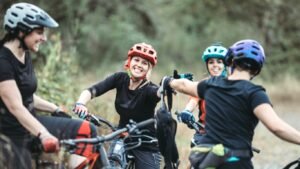
I have not seen normal bike riders wearing body armor just like elbow pads; however, if you are into downhill, freeriding, or enduro riding, or a beginner rider who quickly wants to become a pro rider, you can have that.
Body armor is actually next-level protection that can be a lifesaver.
So here are two types of body armor that you can have:
Chest and back protectors. They are a kind of bulletproof vest for bikers. They offer protection for your torso and spinal guard.
Shoulder guards: You will not usually find vests with shoulder guards. However, many brands have added shoulder protection, which is helpful when you are riding in wooded areas where branches and narrow trails are very common.
-
Goggles or Sunglasses – Eye Protection is Key
Goggles or sunglasses are more important than people think.
Actually, many riders think that eyewear is only needed for snowboarding or motocross, which is not true.
Because when you are riding a mountain bike, especially downhill, and the airflow is fast, then you gotta be careful of dust, mud, and bugs, as they can attack your eyes.
So, in order to protect yourself against these things, you need to invest in proper eyewear, like goggles or sunglasses.
Sunglasses: If you are into XC or trail rides, then you can consider having polarized or anti-fog sunglasses.
Goggles: If you are into DH or enduro riding, and you have to ride mostly in dusty or muddy areas, then you can have goggles for protection.
Also read:
-
Neck Brace – Added Protection for Advanced Riders
If you are an adventure-loving person and like serious downhill or freeriding, then it’s worth investing in a good neck brace.
A neck brace will protect your head from hyperextending or moving too far in any direction when you fall down on the ground. It can save you from serious spinal injury.
However, if you are just a normal biker or don’t wanna be that serious, you can avoid it; otherwise, do not avoid it.
As we say:
Prevention is always better than cure
so have that for extra protection.
In the beginning, a neck brace will feel restrictive, but once you get used to it, everything will be fine.
-
Hydration Pack – Staying Hydrated and Carrying Essentials
A hydration pack is not a mountain bike protective gear, but it is still very important and more practical than many riders think.
Actually, if you are not properly hydrating your body, then dehydration can lead you to poor decision-making, which will slow your times, and ultimately, you can have an accident, or you will not be able to ride long enough.
Therefore, it is important to have a hydration pack, especially for longer routes.
Most hydration packs come with a little storage pocket in which you can also keep a first aid kit or multi-tools, a snack, your phone, or anything else.
-
Mountain Bike Shoes – For Stability and Control
Mountain biking is also an adventurous sport. That’s why shoes are important, just like other sports like football, cricket, basketball, etc.
Many people, especially the beginners, wear regular sneakers. Which sometimes slips off when they pedal constantly. So it’s not just frustrating, but it can also lead to a few bruised shins.
Flat Pedal Shoes: They have a sticky rubber sole, which helps you grip flat pedals. So they are perfect for trail or enduro riding.
Clipless shoes: You can lock these types of shoes into your pedal for extra control. Especially on steep climbs and technical trails.
However, it will take time to get used to these types of shoes. But once you develop a habit, you will feel stability.
-
Padded Shorts – Extra Cushion Where It Counts
Padded shorts are not just for pro riders. Instead, they are for every mountain bike rider who loves adventures.
They are not just for comfort, but they also provide you with safety.
Padded shorts protect your sit bone and soft tissue from any major injury.
Most padded shorts come with a thick foam or gel insert that absorbs the shock and vibration of rough trials.
If you are wearing padded shorts, you will notice the difference when you ride your bike on rocky trails or paths.
Bib shorts: They are good for longer rides. You can hold it up by shoulder straps instead of an elastic waistband.
Plus, they are not uncomfortable when you are sliding down. When you are wearing it, you will look like a pro cyclist.
Waist Shorts: They are also important for riding but more suitable for casual rides.
Waist shorts don’t have shoulder straps, which makes them a little bit more breathable and easier to pull quickly.
But they are not providing protection as Bib Shorts. Yet, they are providing protection. As we say, something is better than nothing.
Pro Tip: When you are looking for padded shorts, you want to look for moisture-wicking fabric and flat seams to avoid any shuffling. More importantly, don’t compromise with the quality.
-
Shin Guards – Protection Against Pedal Slips and Rocky Trails
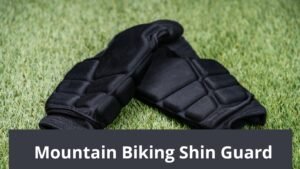
Shin guards are important to protect your shin. Many times, you may slip a pedal and smack your shin. In that case, your guard will protect you.
A couple of times, you will get smacked in your shin on rough trails, especially with the one with rocks.
Soft shin guards: They are lightweight, more flexible, and great for those who love trail riding.
You won’t feel as if you are wearing something, but still, you will remain protective.
Besides this, they are breathable, too, which makes them nicer on hotter days.
Hardshell shin guards: If you are into downhill or enduro biking, then hard shell guards that have a plastic cap are good.
They provide more intense protection as compared to soft shin guards.
However, they are more bulkier. But it’s good for rocky trails.
One tip: You want to make sure that shin guards fit you, but they are not too tight.
-
Protective Jacket – Weather and Impact Protection in One
A good protective jacket is a multifunctional piece of mountain biking gear. They keep you dry in a rainstorm.
Waterproof Jackets: They act like a windbreaker and also protect you on rough trails.
You must have a protective jacket if you are living in a wet climate or you are planning to visit.
When you’re investing in this jacket, you want to look for something lightweight and breathable with sealed seams.
Plus, we don’t buy jackets again and again, so make sure you get a high-quality jacket because cheap waterproof jackets can trap heat and make you feel uncomfortable quickly.
Padded Jacket: They are designed for colder climates or more aggressive downhill rides. Or, in simple words, we can say they are suitable for pro riders.
They provide extra protection on the shoulders, elbows, and even the chest side. When you are looking for a padded jacket, make sure it has good ventilation.
For example, you can look for pit zips or breathable panels for sweat and cooler weather.
Also read: What to wear for Mountain biking?
-
GPS Device or Personal Locator Beacon – Your Lifeline on Remote Trails
A GPS is not exactly an essential mountain biking gear that you can wear for protection, but it is really important for backcountry rides.
When you go on an adventurous ride or unfamiliar trail, you may lose the location.
In that case, you can use a GPS or personal locator to find a way, especially in remote areas.
GPS device: You can get a dedicated GPS device for navigating trails, especially when you are out of the network service area.
Many GPS devices allow you to preload maps, so you won’t even need the internet to use them.
When you are looking for a device, make sure it has a longer battery life than your smartphone. So that you don’t have to worry about the battery dying during the ride.
Personal locator Beacon (PLB): A PLB is more for emergencies, so you can have it if you are a serious rider.
When you activate PLB in serious trouble, it will send a signal to the emergency service in your location.
They are important, especially when you are going through wild areas alone. Or also important on the beaten path.
Smartphone with offline maps: If you don’t want to invest in a GPS device because Google Maps is available on your smartphone, you can also download the offline version on your mobile phone. So that you won’t have to worry about cell service, etc.
But make sure your phone is fully charged, or you can carry an extra power bank in a pocket.
Just in case, if needed so, you can charge your phone and use that smartphone’s map.
Final Thoughts
There were 13 essential mountain biking gear for safety, which every mountain biker needs for safety, protection, and a better experience.
Getting all of this gear might not be possible for every budget bike rider, as buying all these mountain bike gear is an investment. But it’s important.
Even if you are a beginner, intermediate or advanced, I recommend that you wear a helmet. Because head protection and safety are a must, we cannot compromise with that.
Besides this, you should also look for gloves, knee pads, etc. In my opinion, these are the most important.
On the other hand, you can have goggles, neck braces, and a hydration pack when you are trying to get serious. Or the budget is not your primary concern.
Why should I wear all this protective mountain biking gear?
You should wear all these protective gear for mountain biking. Each gear has a different duty.
For example, a helmet will save your head from any injury.
Gloves will provide you with a better grip and save you from cold or hot environments. A knee pad will prevent any knee injury.
Although you will not fall down every time, and you will feel like buying mountain biking protective gear was a waste of money, that’s not true.
Having all these mountain biking safety gear is like health insurance. You won’t need it on every general ride, but one time, you will say thank you if you ever seriously fall somewhere.
That’s why, for your protection, you need to wear all this gear, especially the helmet, gloves, shoes, etc.
Why is there different gear for downhill versus regular mountain biking?
There are a few different gears for both regular mountain biking and downhill riding.
Because downhill riding is more intense and serious, many people do not feel comfortable doing it because it seems risky to them, although it is more adventurous.
On the other hand, regular mountain biking is very simple and not too risky, so you won’t need heavy gear for that.
Downhill biking is too fast and steep, and often, the paths are filled with rocks, roots, big jumps, etc.
On the other hand, in regular mountain biking, you will not hit the ground at a very high speed with rocks, roads, jumps, etc. So, regular bike riding is simple and downhill is more adventurous and risky.
That’s why downhill gears are heavy and expensive, while regular mountain biking gears are light and inexpensive.
Can’t I use regular sports clothing instead of mountain biking-specific gear?
Yes, you can wear regular sports clothes for normal mountain biking, but keep in mind that regular sports clothes are designed for running or gym exercise, etc., but they are not for protecting you from rocks, roads, or wiping out on steep trails.
For example, a gym jacket is usually more flexible and light so that you can move your hand perfectly.
On the other hand, mountain biking jackets are thick so that even if you fall down, you do not get a lot of scratches on your body.
Plus, it is specially designed to protect you from rain, over-sweating, etc.
These bike-riding jackets will keep you dry. So, if you wanna be serious about mountain biking and want to ride on longer routes and trails, you should have a jacket.
If you just want a time pass, then it’s okay to wear regular sports clothes instead of dedicated mountain gear and clothes.

